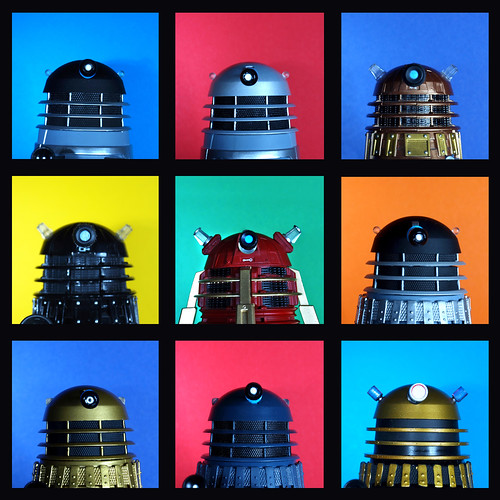Photopin Example:
One of my latest discoveries is Photopin.com.
Like ImageCodr.org and the Flickr CC Attribution Helper, which are tools that may be dragged to one's toolbar, this site allows users to grab HTML code that will quickly generate an attribution on a website or blog.
Unlike ImageCodr.org, this tool requires users to download a desired image and copy the HTML code in two separate steps. Currently, it's not possible to preview the attribution prior to pasting the code.
One thing to watch out for with Photopin.com is that the sponsored images on their site may have watermarks on them.
photo credit: Exterminate via photopin (license)
Photos for Class Example:
I learned about this tool from Richard Byrne, who recently wrote a blog about the Photos for Class widget that allows users to add a tool to their blog to search for Creative Commons licensed images.
Images from this site have been filtered and deemed safe for a school audience and have the attributions typed on the actual images that are downloaded for personal use.
While this tool eliminates some of the guesswork, the attribution may be difficult to read (see the example on the left) if the image selected isn't large. This tool should be used judiciously, because text that's impossible to read defeats the purpose of attribution. (I've linked the image to its original source.)
FlickrCC Stampr Example:
The FlickrCC Stampr was created specifically with students in mind and for use on mobile devices.
Like Photos for Class, this tool can stamp attribution information directly to an image for download. Like ImageCodr, you can choose the image size you want and opt to copy the HTML code.
This tool is particularly useful for creating remixes and other derivative works, because it only filters images licensed with those permissions!
ImageCodr Example:
Additionally, users can preview the attribution when selecting the size of their image. This is handy in the event that you want to copy and paste the attribution into a Google Doc or a static presentation, rather than using HTML code to generate it for you.
Flickr CC Attribution Helper Examples:
Flickr CC Attribution Helper allows you to "build your own attribution tool," enabling you to choose whether you want to download an image and copy the attribution together or separately or to use the HTML code. In the first example on the left, I added the attribution info separately from the image. As a result, the attribution is not hyper-linked.
Creative Commons licensed (BY-NC-SA) Flickr photo by Johnson Cameraface: http://flickr.com/photos/54459164@N00/5669445634
Using the HTML code, rather than copying and pasting the image and attribution separately, will result in the creation of a hyper-linked attribution, which is useful for interactive images on websites or blogs.
creative commons licensed ( BY-NC-SA ) flickr photo shared by Johnson Cameraface
Having the attribution information stamped directly on the photo is another useful feature of this tool. The attribution will not be hyper-linked if you stamp the image.









